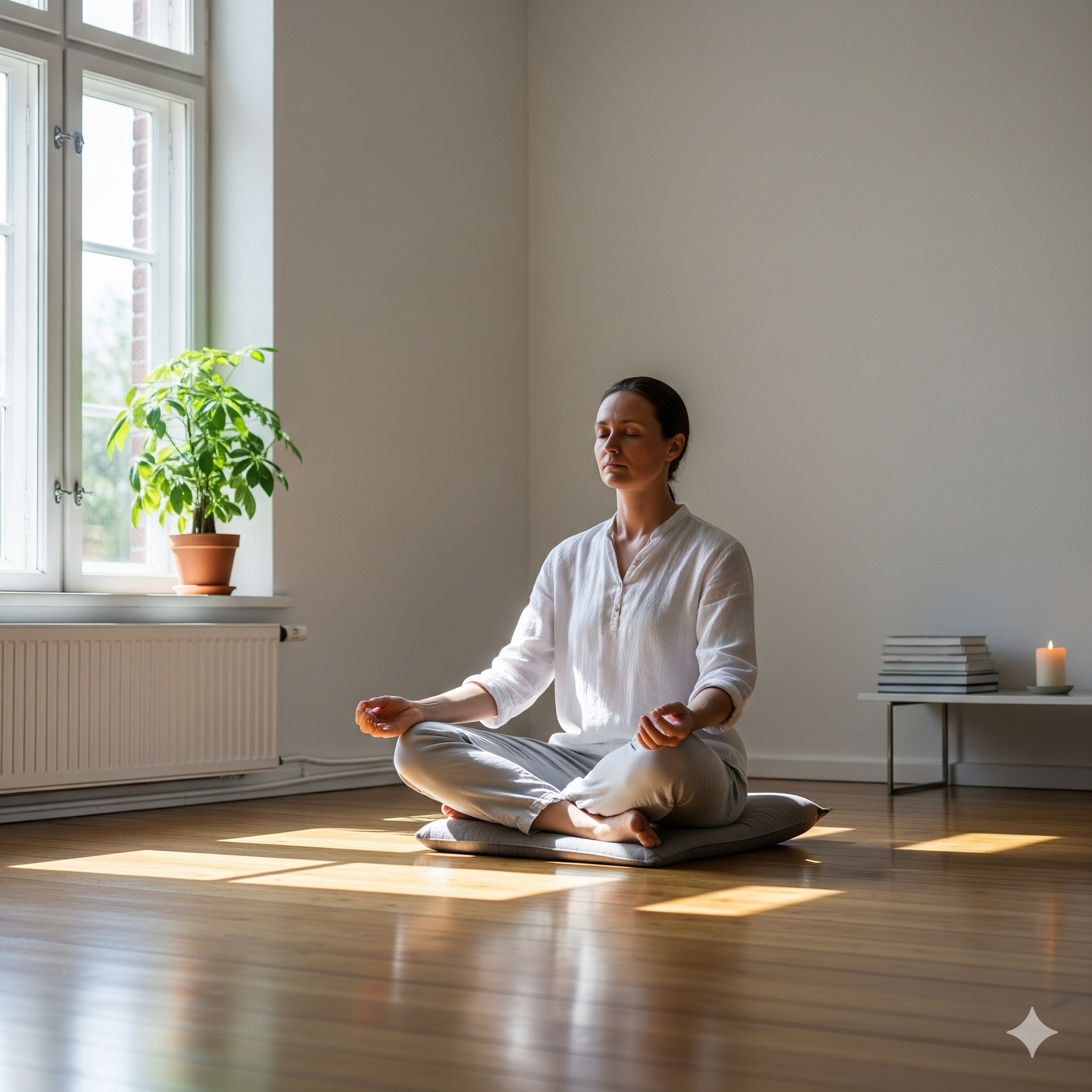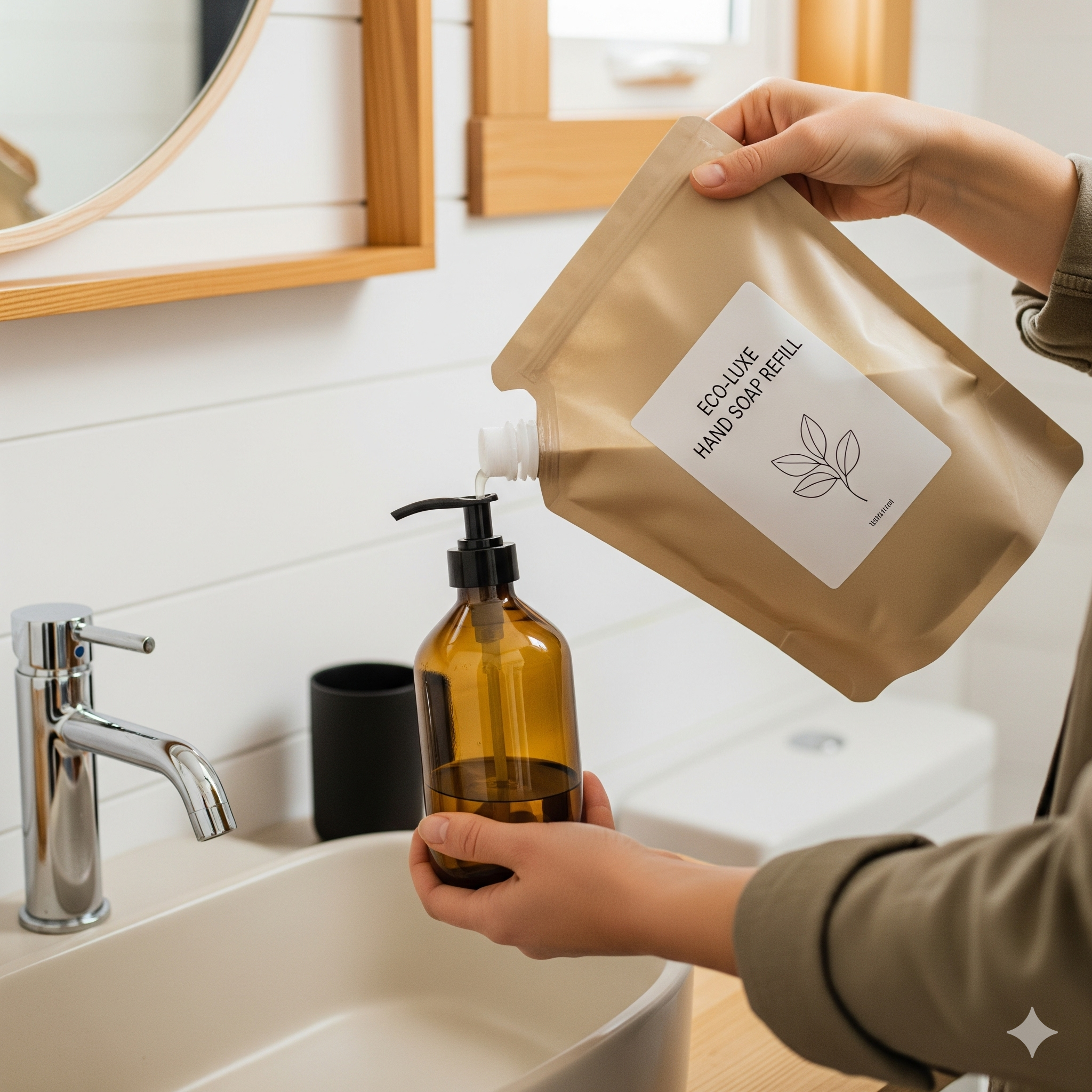Easy 30 Day Declutter Challenge Printable
Take our easy 30 day declutter challenge printable guide for a more organized home. Includes tips inspired by the KonMari method and more.
Your Home, Reimagined: The Ultimate 30-Day Declutter Challenge for a Calmer, More Organized Life
There is a weight to clutter that goes far beyond the physical objects themselves. It’s a mental weight, a constant, low-grade hum of stress that reminds us of unfinished tasks, wasted money, and a general sense of being out of control. As someone who has dedicated my life to the principles of intentional living in small spaces at Neat Tiny Home, I know that the single most transformative act you can perform for your home and your well-being is to declutter. But I also know that the sheer thought of it can be utterly paralyzing. Where do you even begin? The task can feel so monumental that it’s easier to just close the closet door and ignore it for another day.
If that sounds familiar, then this is for you. This isn’t just another article with a few tidying tips; this is a structured, manageable, and empowering action plan. Welcome to the ultimate easy 30 day declutter challenge printable guide. We are going to break down the overwhelming task of decluttering your entire home into small, bite-sized, daily missions. Over the next 30 days, we’ll build momentum, create new habits, and systematically reclaim your space. We’ll touch on the philosophy of the world-renowned KonMari method and provide gentle, practical decluttering tips for hoarders and the chronically disorganized alike. My goal is to be your coach and your cheerleader, guiding you through a process that will leave you with a home that is not just tidier, but is a true sanctuary of calm and order.
Why a 30-Day Challenge is the Secret to Overcoming Decluttering Paralysis
The “all or nothing” approach to decluttering is what dooms most people to failure. We get a burst of inspiration, try to overhaul our entire house in one weekend, burn out by Sunday afternoon, and are left with a bigger mess than when we started. A 30-day challenge completely flips that script. Its power lies in its structure and its focus on consistency over intensity. It’s a psychological tool designed to outsmart the part of our brain that feels overwhelmed and resists change. Instead of facing a mountain, you’re just asked to climb a small hill each day. Before you know it, you’re at the summit.
The Power of Small, Consistent Wins to Build Momentum
The magic of a daily challenge is the momentum it creates. When you successfully complete a small, 15-minute task like clearing your medicine cabinet on Day 3, you get a small hit of dopamine. You feel a sense of accomplishment. This positive reinforcement makes you more likely to tackle the task on Day 4. These small, daily wins build on each other, creating a powerful snowball effect. By the time you reach the more challenging areas like your wardrobe or sentimental items, you’ll have a proven track record of success and the confidence to see it through. This is the secret to rewiring your brain and turning the dreaded chore of decluttering into a rewarding habit.
Preparing for the Challenge: Your Toolkit for Success
Before you begin Day 1, take an hour to set yourself up for success. Having the right tools on hand prevents you from having an excuse to stop once you’ve started. This isn’t about buying a bunch of fancy organizing products; it’s about having the basic tools for sorting and purging.
| Toolkit Item | Purpose | Pro-Tip |
|---|---|---|
| 4-5 Boxes or Bins | For sorting your items. | Label them clearly: KEEP, DONATE, TRASH, and RELOCATE. |
| Trash Bags | For items that are broken or cannot be donated. | Use a heavy-duty contractor bag to avoid rips and spills. |
| A Timer | To keep you focused on short, manageable bursts. | Use your phone or a kitchen timer. Sticking to the time is key. |
| “Purgatory Box” | A single box for items you’re unsure about. | Seal it, date it, and if you haven’t opened it in 6 months, donate it sight unseen. |
The Philosophy of Letting Go: Combining Methods for Success
This challenge is built on a hybrid philosophy that combines the mindful, joy-focused approach of the KonMari method with some practical strategies for those who struggle with deeper attachment to their belongings. True decluttering is an emotional process, and having the right mental framework is essential.
An Introduction to the KonMari Method
Marie Kondo revolutionized the world of tidying with a simple question: “Does it spark joy?” Her method, detailed on her website KonMari.com, encourages you to touch every single item you own and ask yourself that question. If the answer is a resounding “yes,” you keep it. If not, you thank the item for its service and let it go. While we won’t be tackling categories in her exact order, we will be using her core principle of mindful, joy-based decision-making, especially when we get to our clothes and personal items.
Gentle Decluttering Tips for Hoarders (or the Chronically Disorganized)
For some, the clutter is more than just a bad habit; it’s a source of deep anxiety. While this guide is not a substitute for professional help in cases of hoarding disorder (for which resources like the ADAA are invaluable), its principles can be adapted. The key is to start incredibly small and focus on celebrating every tiny victory.
- Start with Trash: The easiest and least emotionally charged category is obvious trash. Spend the first few days just walking through your home with a trash bag.
- Don’t Try to Organize and Declutter at the Same Time: The only goal during this challenge is to get the excess stuff out. You can focus on buying pretty containers and creating systems later. –Take Photos: A “before” photo can be a powerful motivator. When you feel like you’re not making progress, looking back at where you started can be a huge encouragement.
The Easy 30-Day Declutter Challenge Printable Guide
Here it is! Your day-by-day plan. Each task is designed to take between 15 and 45 minutes. The goal is progress, not perfection. Feel free to copy and paste this into a document to print out and stick on your fridge. Let’s begin!
Week 1: The Easy Wins and High-Traffic Zones
This week is all about building momentum with quick, satisfying tasks that have a big visual impact.
- Day 1: Your Entryway. Clear the surfaces. Put away shoes, coats, and bags that don’t belong. Create a designated spot for your keys.
- Day 2: Flat Surfaces in the Living Room. Coffee tables and end tables are clutter magnets. Clear everything off, dust, and only put back a few essential or beautiful items.
- Day 3: The Bathroom Medicine Cabinet. Toss expired medications and old cosmetics. Wipe down the shelves.
- Day 4: Under the Bathroom Sink. Pull everything out. Get rid of empty bottles and products you never use.
- Day 5: The “Junk” Drawer. We all have one. Empty it completely. Sort items into categories, toss the trash, and only put back what you truly need.
- Day 6: Your Car. Take out the trash, organize the glove compartment, and reclaim your trunk.
- Day 7: Rest & Recharge. No decluttering! Your only job is to take your “Donate” box to a donation center.
Week 2: The Kitchen and Pantry Cleanse
The kitchen is the heart of the home, but it can also be a major source of clutter. This week, we tackle it one zone at a time.
- Day 8: The Refrigerator. Toss expired condiments and old leftovers. Wipe down all the shelves and door compartments.
- Day 9: The Freezer. Get rid of anything with freezer burn or that is unidentifiable.
- Day 10: The Pantry – Food. Check for expired cans, stale crackers, and spices you bought for one recipe in 2015. Consolidate duplicates.
- Day 11: The Pantry – Dishes. Do you need 20 coffee mugs? Are there chipped plates or bowls? Pare down to your best and most-used items.
- Day 12: Pots, Pans, and Bakeware. Get rid of scratched non-stick pans and duplicates.
- Day 13: Utensils and Gadgets. Do you really need an avocado slicer, a banana guard, and three different types of peelers? Be honest.
- Day 14: The Tupperware Drawer. Match all lids to their containers. Recycle any that are stained, warped, or lid-less. For great decluttering motivation, I love the realistic approach of Dana K. White from A Slob Comes Clean.
Week 3: The Clothing and Personal Items Edit
This week, we bring in the KonMari method. As you touch each item, ask yourself if it fits, if you’ve worn it in the last year, and if it sparks joy.
- Day 15-17: Your Wardrobe. This is a big one, so we’re giving it three days. One day for hanging clothes, one for folded clothes, and one for your dresser drawers. Be ruthless!
- Day 18: Shoes, Bags, and Accessories. Go through your shoes, purses, scarves, and jewelry.
- Day 19: The Linen Closet. How many towels do you really need? Get rid of any that are frayed or stained.
- Day 20-21: Books, Movies, and Music. Let go of books you’ll never read again and movies you can stream. Keep only your absolute favorites.
Week 4: The Final Frontiers (Paper, Digital, & Sentimental)
We’ve saved the toughest categories for last. You have the momentum and the confidence now to tackle them.
- Day 22-24: The Paper Monster. Sort through your mail pile. Create a simple filing system for important documents. Recycle or shred the rest.
- Day 25-27: Digital Declutter. Clean off your computer desktop. Unsubscribe from 20 email lists. Delete unused apps from your phone.
- Day 28-30: Sentimental Items. This is the final boss. You don’t have to get rid of everything, but you don’t have to keep every single greeting card or child’s art project. Choose a single, beautiful “memory box” and keep only the best of the best—the items that truly represent your most cherished memories.
Life After the Challenge: How to Maintain Your Newly Organized Home
You did it! Congratulations! The key now is to implement a few simple habits to ensure the clutter never builds up again.
- Implement the “One In, One Out” Rule: For every new item that comes in, a similar item must go out. –The 10-Minute Nightly “Reset”: Before bed, do a quick sweep of the main living areas. Put away the mail, fluff the pillows, wipe the counter.
- Create a System for Incoming Items: Deal with mail as soon as it comes in. Unpack shopping bags and put things away immediately.
Frequently Asked Questions (FAQ)
What should I do with the stuff I want to donate or sell?
For donations, schedule a pickup from a local charity or find a convenient drop-off bin. For selling, focus on one or two easy platforms. Facebook Marketplace is great for furniture and local sales. For clothing and accessories, sites like Poshmark or ThredUP are excellent. The key is to get the items out of your house quickly so they don’t become a new form of clutter.
I missed a day! Have I failed the challenge?
Absolutely not! Life happens. The goal is progress, not perfection. Don’t let one missed day derail you. Just pick up where you left off the next day, or combine two of the smaller tasks into one day to catch up. The only way to fail is to stop completely.
I’m still struggling to let go of items, even if I don’t use them. What’s wrong with me?
Nothing is wrong with you! This is completely normal. Our possessions are tied to our memories, our identity, and our sense of security. This is where the “Purgatory Box” is your best friend. It’s a low-stakes way to test how you feel living without the item. If you don’t miss it after a few months, it will be much easier to let it go for good.





Post Comment